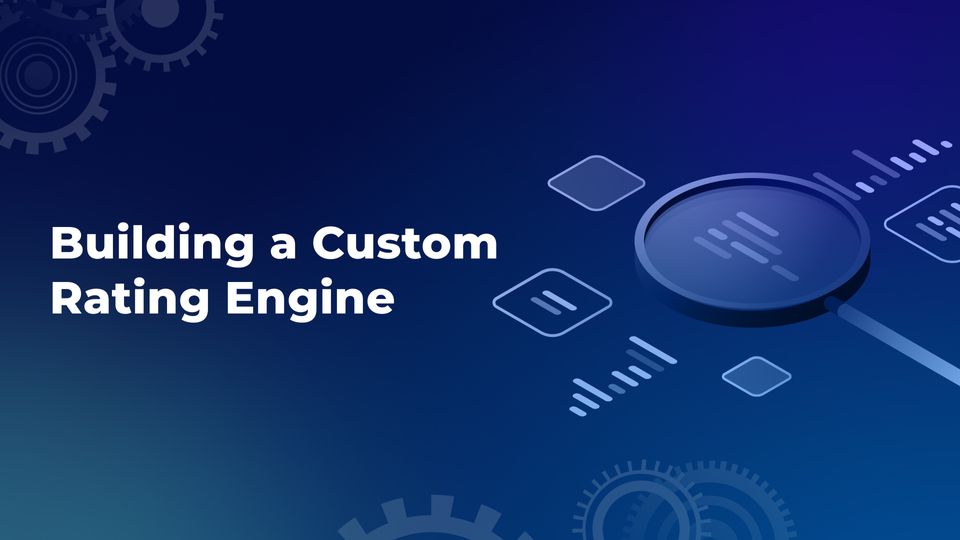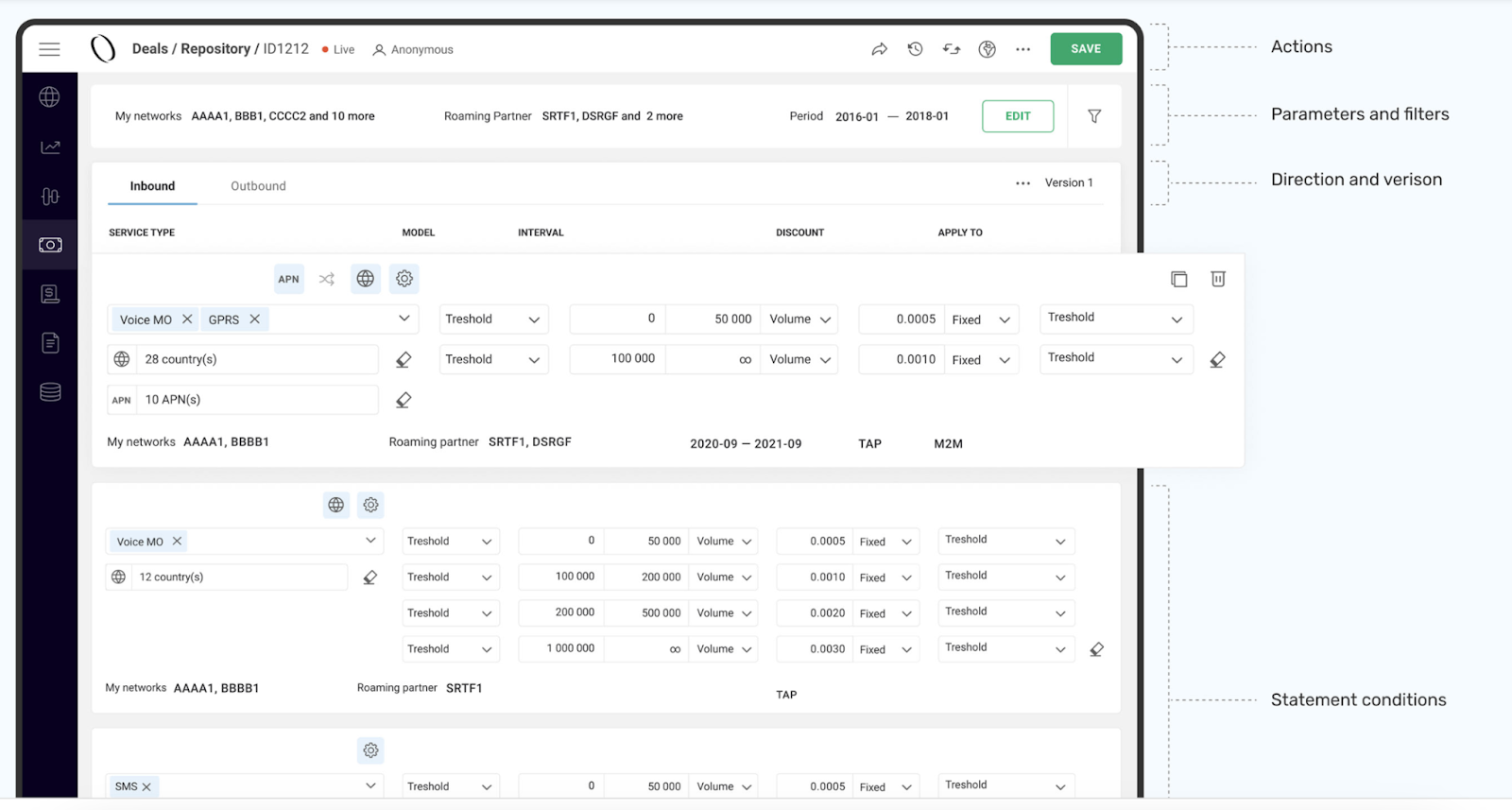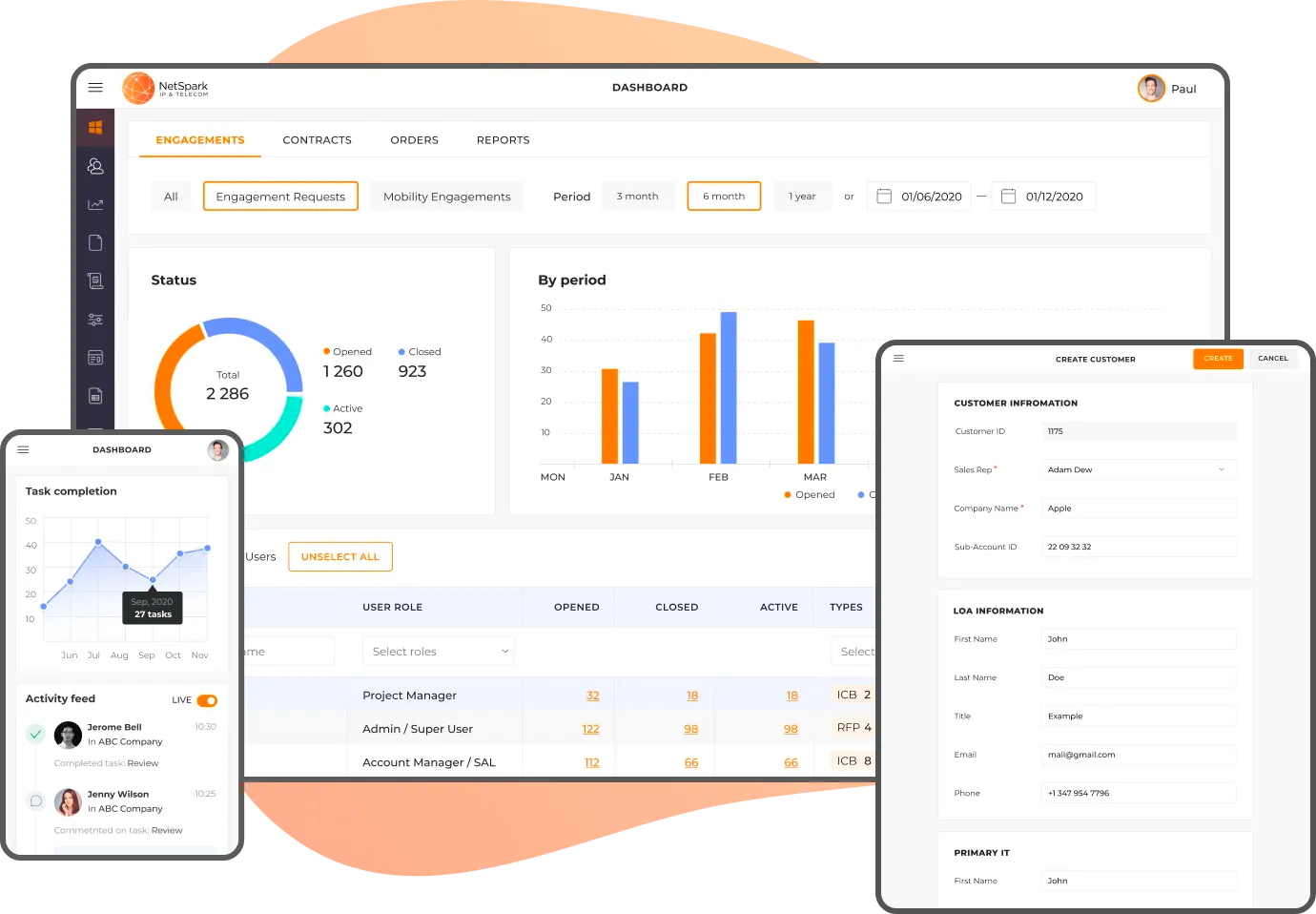Building a Custom Rating Engine for Roaming Wholesale, Telecom Consulting, and IoT Sim Tariffication to Increase Profitability and Enhance Operations

Telecom service providers face many operational challenges when it comes to calculating the charges for various services and products based on complex tariff plans and bundles. Choosing the right tariff among thousands of options, analyzing data about every event and billing for it is back-breaking even for employees with profound expertise.
Without an efficient rating engine built into a telecom billing or BSS system that calculates the price of transactions occurring in a telecommunication network, telcos will struggle to switch customers to new rate plans, offer attractive deals, settle vendor bills, reduce costs, and assess the effect of customer churn on profits.
Oracle BRM, Netcracker Revenue Management, and Ericsson Charging System are some of the most commonly used rating engines that help address these and other challenges. But since the scale and operations of telecom providers vary greatly, many of them opt for developing in-house rating engines based on their unique needs. But increasingly, telecom providers are leveraging AI development platforms to accelerate the creation of intelligent, data-driven rating engines that can handle complex tariff calculations with greater efficiency and adaptability.
To learn more about effective AI implementation in telecom and other industries, check out our article on AI Implementation strategies.
As a software development company with a decade-long experience in building telecom solutions, Flyaps wants to share our expertise in developing custom rating engines for three different use cases in telecom – roaming wholesale business, telecom consulting, and IoT SIM tariffication – so you can get an idea of how this custom implementation may work and what value it can provide to your business.
Without further ado, let’s start with a wholesale business example.
Roaming wholesale business use case: Defining optimal rates
Roaming business is probably the most complex domain of telecom. Negotiating with worldwide partners, finding a balance between competitive pricing and profitable margins, and ensuring the stability of every service, namely, inbound and outbound SMS MO, SMS MT, Voice MO, Voice MT and data services – all of it presents specific challenges.
To enable roaming for their customers, telecom providers have to set wholesale rates with partner networks in different countries. These rates determine the charges that the home operator incurs when their customers use services on the network they visit. Setting wholesale rates is a key process that includes multiple steps.
First of all, setting rates involves complex negotiations. Finding the rate that suits both partners often demands intricate discussions and agreements, considering each network's unique pricing structure, billing mechanisms, and terms and conditions.
All the negotiations have to be aligned with regulatory environments established by local authorities. Adapting to different regulations in pricing, interconnection policies, and settlement procedures makes the rate-setting process even more complex.
Apart from national regulations, rates cannot be defined without analyzing traffic patterns. Wholesale rates must consider anticipated traffic volume and roaming customer usage patterns to define the price that users can pay for certain services. That’s why telecom providers have to analyze historical data, forecast demand, and align pricing structures to ensure fair compensation for network usage while attracting and retaining users.
Finally, after defining the optimal tariff rate comes the last step, which is ensuring accurate billing and settlements. Wholesale rates must be precisely calculated and reflected in the billing systems of both home and visited networks. Any discrepancies can lead to financial disputes and strain partnerships which can negatively impact the company's profit. To avoid it, telcos have to assure revenue monitoring, by closely tracking wholesale rates and settlements to minimize revenue losses and increase profitability.
All the above-mentioned challenges pose a high bar for a solution designed to collect and analyze data, define rates and assure smooth negotiations. Based on our experience in the telecom domain, here are some of the main requirements for a custom rating engine, so that it can tackle the challenges of roaming for wholesale businesses.
From cloud migration to telecom-specific AI solutions, we have delivered over 20 projects that are used by hundreds of MNOs and telecom companies worldwide. Check our capabilities and let’s discuss your next solution.
See our servicesKey requirements for the rating engine in roaming
A custom rating engine can significantly improve efficiency in the roaming wholesale rate calculation – but only if it meets the industry standards. Based on the challenges above, here are the most critical requirements for a custom rating engine:
- The first aspect is the capacity of the engine to handle large volumes of data. The rating engine must be capable of processing tens of thousands of files, containing roaming usage records and billing information.
- Real-time rating. B2B negotiations involve decision-making on the go, which is possible only with a system that easily provides the essential data, compares different options and shows the most suitable one in real time, making the deal much easier to close.
- Discount calculation is the key process that needs to be supported by a custom solution. The rating engine should provide mobile operators with insights on the discount amounts applicable to roaming usage. It needs to consider the negotiated wholesale rates and apply appropriate discounts based on the agreed-upon terms between providers.
- Finally, the rating engine should facilitate financial settlements between the involved companies. The solution needs to generate accurate billing information, invoices, and financial reports to ensure transparent and timely settlements between home and visiting operators.
Following these requirements, Flyaps developed a rating engine that is built into a custom platform for Yaana – a leading provider of roaming software solutions.
Case study: Yaana implemented a deal constructor with a rating engine for roaming wholesale tariff plans
To develop a custom rating engine for Yaana, we built a complex mathematical algorithm. This algorithm considers several parameters such as data usage, and value-added services like roaming data packages or voice and messaging bundles, and supports various rating models, including single rate (fixed rate), threshold (stepped/tiered), balanced/unbalanced (charges applied to both inbound and outbound traffic (balanced) or only one direction of traffic (unbalanced)), as well as volume, charge, and incremental commitment.

We integrated this rating engine into the data analytics platform for roaming operations. As a result, it facilitates accurate and flexible billing for mobile operators based on their specific pricing structures and services and allows telecom companies to define tariff and discount scenarios, rate events, produce accurate summaries, and scale securely using the cloud infrastructure.
Read more in our case study and have a look at the interface of the system.
Telecom consulting use case: Optimizing B2B tariffication
To manage client expenses, telecom consultants often depend on manual processes. They use rate tables that indicate the rates and charges for different services, usage limits, and pricing schemes. To figure out charges, employees apply formulas in Excel spreadsheets and have to manually confirm the charges to ensure they fit the tariff plans and rates.
Excel tables become a bottleneck when it comes to operating tariff rates. As data access is not direct and the performance is quite poor due to great amounts of data and hundreds of agreements in the system, it becomes challenging to support the whole workflow with such an instrument. As a result, telecom consultants have to deal with mistakes and long waiting times, particularly as the customer base and volume of usage increase.
To gain more clients and provide services that fit their needs, telecom enterprises invest in developing custom tariff calculator engines. A custom-built system helps estimate how much money a client will save when choosing a specific tariff plan. By using data on mobile traffic usage, the engine can also help forecast what tariff will fit best for the clients needs.
To build an advanced tool for optimizing B2B tariffication in telecom, you can follow our list of key requirements below.
Key requirements for the rating engine in telecom consulting
To streamline tariffication process and offer customers the most profitable options, a custom engine needs to align with the following requirements:
- Accurate calculations. Manual rating calculations are prone to errors and inconsistencies. To avoid time-consuming processes and the risk of mistakes, a rating engine must automate the calculation process by adopting advanced algorithms, ensuring accuracy, consistency, and adherence to predefined rules and pricing structures.
- Flexibility and agility. The telecom industry is constantly evolving with new services, plans, and pricing models being introduced regularly. To keep up with the growing industry demands, a rating engine must be flexible and scalable – both in front-end and back-end. Intuitive UX must be combined with modern architecture that enables fast system updates without disrupting business processes.
- Integration with other systems. A rating engine serves as a central component in the overall telecom ecosystem, integrating with other systems such as customer management, billing, provisioning, and revenue assurance software. To enable seamless data exchange and allow accurate tracking of traffic usage, a rating engine must be integration-ready with third-party systems.
Now that we’ve defined the most important requirements, let us show you how it can be implemented, using the NetSpark IP & Telecom as an example.
Case study: Developing an automated tool for NetSpark IP & Telecom to find the most suitable combination of tariff plans for each client
Flyaps developed an automated tariff calculator that fully streamlines data analysis, finds the best combination of tariff plans, and significantly reduces costs. With such a system, NetSpark employees can easily demonstrate the attractiveness of new offers: the calculator benchmarks new offers against the competition by calculating what customers would pay according to different tariff plans.
This, in its turn, allows customers to switch tariff plans according to their business needs. The system helps analyze alternative bills and decide which new offer should be proposed to the customer, ensuring the profitability of the offer even in changeable situations.
The engine also allows control and optimization of costs. It simplifies traffic usage analysis and allows for comparing the costs of several service providers with actual traffic.

Integrating a custom tariff calculator increased NetSpark’s profitability by accelerating the core business processes and reducing manual work.
IoT use case: Simplifying SIM tariffication in telecom
In the realm of the Internet of Things (IoT), telecom providers often cater to corporate clients who utilize IoT SIM cards for their connected devices. Each corporate client typically has their own integrations in place to gather data about their IoT traffic. A telecom provider operating in a B2B IoT ecosystem must have a unified and efficient solution for managing IoT traffic and billing for multiple corporate clients. Acting as a unified system for managing numerous clients, such a solution has to respond to the needs of the industry.
Key requirements for the rating engine in IoT
Here are the main features that a custom SIM tariffication solution must provide for the needed results:
- Data usage tracking. The engine should be able to accurately track and record the data usage of IoT devices and applications. It should capture relevant data metrics, such as the volume of data transmitted, duration of usage, or specific events triggered, to determine the appropriate charges.
- Integration capabilities. The IoT tariff rating engine should seamlessly integrate with other systems and components within the IoT ecosystem, such as device management platforms, billing systems, provisioning systems, and customer management systems. Such integration should enable accurate data exchange and synchronization to ensure consistent and reliable billing.
- Security and fraud prevention. The engine should incorporate robust security measures to protect the internal system and guarantee the safety of data received from the partners. It should include mechanisms for fraud detection and prevention, ensuring the integrity and trustworthiness of the billing and rating processes.
- Scalability and performance. As there can be a huge number of connected IoT devices and services, the tariff rating engine should be capable of handling high volumes of data and rating calculations in a scalable and efficient manner. It should be able to perform calculations rapidly to ensure real-time responsiveness.
Conclusion
In the telecom industry, rating models are used to determine the charges or pricing for various services offered to customers. These models take into account different factors such as usage volume, commitment levels, and service types to calculate the appropriate fees.
By leveraging advanced rating engines, telecom operators open new possibilities for B2B tariffication, offering their clients the most profitable tariffs and rates. Improving the complex process of defining the most suitable tariff combinations for each client, rating engines are quickly becoming a must-have tool in telecom, making robust connection as accessible and profitable as never before.
Implementing a custom rating engine into an existing system is possible with an experienced team that knows the specifics of the telecom domain. Flyaps, a development shop with vast expertise in building custom telecom solutions for the world’s leading companies, have the needed skills to improve the bottlenecks that you face. If your enterprise lacks any of the above-mentioned functionalities, contact us – we’ll be glad to help your business grow.






